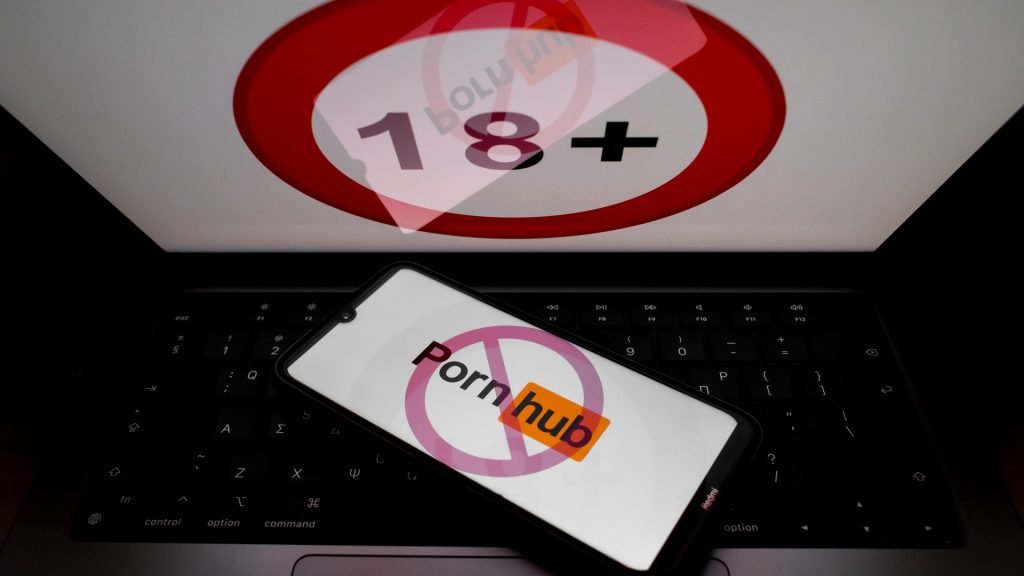Ohio passed an anti-porn law, but it doesn’t ban porn

Ohio lawmakers passed a law requiring age verification to view pornographic websites. However, that law exempts most major pornography websites.
Ohio’s anti-porn law
The new age-verification law went into effect on Sept. 30. It requires online platforms offering “material harmful to juveniles” — meaning porn — to check photo IDs or use “transactional data” like mortgage or employment records to verify visitors are adults.
Among organizations exempted from this law are any providers of “an interactive computer service.” Those providers are defined at the Ohio state level in the same way they are at the federal level.
The federal law defines those providers in Section 230 of the Communications Decency Act, which was passed in 1996.
“This law basically says websites aren’t liable for third-party content, and in doing so, it defined the category of services that were protected by this law, and it defined them as interactive computer services,” Eric Goldman, law professor and director of the High Tech Law Institute at Santa Clara University, told Straight Arrow News.
Basically, it’s any website on the internet. That terminology came from AOL and was then adopted by Congress as part of the 1996 law.
Pornhub is the most popular pornographic site on the internet. Pornhub’s parent company, Aylo, isn’t blocking Ohio users as it has in other states with age-verification laws because they don’t believe this new law applies to Pornhub.
“The statute essentially says that any purveyor of pornography on the internet is excluded from the statute,” Goldman said.
Why the exemption?
Why did Ohio lawmakers leave this Section 230 exemption in the law?
“State legislatures generally are pretty sloppy when it comes to passing statutes,” Goldman said. “This is a known problem, and it’s in part because there just isn’t the same infrastructure for the legislature that there is at a more well-resourced legislature like Congress. “
Another reason could be that the law was passed as part of a large budget bill instead of as a standalone bill.
“By short-circuiting the process, the bill didn’t necessarily get all the attention that it might have gotten through a normal channel,” Goldman said.
Past age verification bills failed in both the Ohio House and the Senate in the last two years.
“It’s actually not surprising at all to me that state legislature would flub something like this, especially when it comes to internet law,” Goldman said. “The legislatures don’t understand the technology.”
Ohio lawmakers could certainly go back and close this loophole, but that may be easier said than done.
“There was some really weird language in that particular statute that could be an issue,” Goldman said. “And I’ll give you one example. In addition to excluding interactive computer services, which is basically the internet, they also excluded cloud-based services, which they didn’t define either. And I don’t know what a cloud-based service is, but I think it’s pretty much the same thing as interactive computer services.”
Age-verification laws
Along with Ohio, 23 other states have age-verification laws in effect for online pornography. Missouri has also passed a law, but it won’t take effect until November.
Nebraska is among those states with the law in effect. In 2024, Straight Arrow News spoke with state Sen. Dave Murman, R-Glenvil, who helped get that law passed.
“The only thing Pornhub has to do is use some type of an online age verification agency to verify the age of those that are trying to access their website,” Murman said. “So there are many independent age verification agencies available that they could use. So, it would be a simple step, just to verify age that way to access their website.”
People against these kinds of laws argue that there are data privacy issues. Age-verification usually requires presenting your driver’s license, which contains significant personal information, or even face scanning.
“The bill actually tries to address that by saying that some of that information is restricted for further usage or collection,” Goldman said. “But in practice, we have no reason to believe that there will be adequate privacy protections in this process or that there will be a good government enforcement of any privacy violations.”
Goldman believes these age-verification laws do more harm than good. He calls them “segregate and suppress laws.”
“The general idea is to try to segregate children from adults online and then suppress resources to children, and those laws are filled with problems,” Goldman said.
SAN also spoke with Molly Buckley last year. She’s a legal fellow at the Electronic Frontier Foundation who has concerns over age-verification laws.
“Any bill that requires people to upload their identifying documents to one of these platforms in order to get access to the protected speech on these platforms is going to pose a problem for First Amendment rights,” Buckley said.
Supreme Court involvement
The Ohio law follows a Supreme Court decision earlier this year in the Free Speech Coalition, Inc. v. Paxton decision. It essentially said requiring pornographic websites to age-verify is legal because of the legitimate goal of protecting minors.
“We have a conservative court now, and I think we can all be in agreement, whether we’re conservative or liberal,” Murman said. “It’s nonpartisan that we need to protect our young people, our youth and our children from obscene material.”
Supreme Court Justice Clarence Thomas wrote the majority opinion, despite voting opposite in Ashcroft v. ACLU in 2004. The Paxton decision effectively overruled that Ashcroft decision.
In that 2004 decision, justices effectively said the best approach was device-level regulation, not server-level. Meaning regulating individual devices instead of the internet as a whole.
“Server-level regulation was too broad,” Goldman said. “It took away content from people who had the constitutional right to access it, and also, didn’t really solve the problem for various reasons. Because, for example, the laws were different in other countries, and so the kids were still getting porn, whether the law existed or not.”
Buckley added that parents should be the ones regulating their children.
“There’s all sorts of platforms already [that] have all sorts of tools that parents can use and that families can use, and that even kids themselves can use to limit who their accounts are exposed to,” Buckley said.
The post Ohio passed an anti-porn law, but it doesn’t ban porn appeared first on Straight Arrow News.





